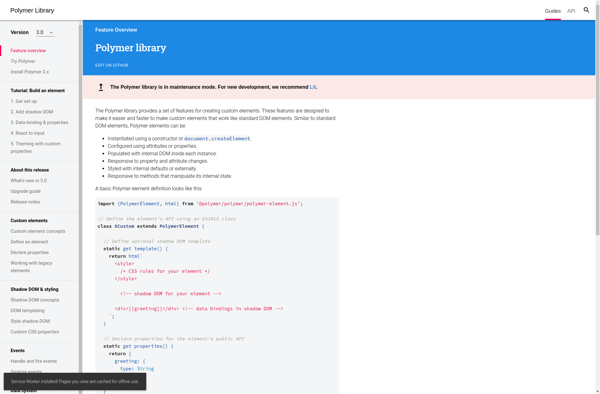KnockbackJS

KnockbackJS: JavaScript MVVM Framework for Responsive UI
A JavaScript framework for creating responsive user interfaces by synchronizing data between models and views, managing complex relationships with high performance.
What is KnockbackJS?
KnockbackJS is an open-source JavaScript MVVM (Model-View-ViewModel) framework that helps developers create responsive web applications by simplifying two-way data binding between DOM elements and JavaScript objects. It provides a simple yet powerful way to connect data to the UI without the need to manually manipulate the DOM.
Some key features of KnockbackJS include:
- Automatic UI refresh - When the underlying model data changes, the UI automatically updates.
- Declarative bindings - Declaratively bind UI elements to model data using simple syntax.
- Computed observables - Create derivatives of model data that updates automatically.
- Efficient change tracking - Only update parts of the UI that actually changed.
- Templating - Integrates popular templating libraries like Handlebars.
- Modular architecture - Designed to play nicely with other libraries like jQuery, Backbone, etc.
By handling the synchronization between data and UI, KnockbackJS makes it easy to create rich, responsive web applications with clean and maintainable code. Its automatic DOM manipulation eliminates boilerplate code while facilitating separated presentation from the underlying business logic in an MVVM application.
Overall, KnockbackJS helps reduce complexity and improve maintainability, performance and responsiveness of JavaScript web applications by leveraging the MVVM architecture and automatic model-view synchronization.
KnockbackJS Features
Features
- Data-binding between models and views
- Declarative bindings for linking models and views
- Automatic UI refresh when model data changes
- Support for collections and lists
- Built-in validation functions
- Routing and URL management
- Pub/sub event system
Pricing
- Open Source
Pros
Cons
Official Links
Reviews & Ratings
Login to ReviewThe Best KnockbackJS Alternatives
Top Development and Javascript Frameworks and other similar apps like KnockbackJS
Here are some alternatives to KnockbackJS:
Suggest an alternative ❐FeathersJS

Zepto.js

Ember.js

AngularJS

Backbone.js

Meteor

Polymer

ExpressJS

KnockoutJS

Ampersand.js

Node on Fire
Fastify
